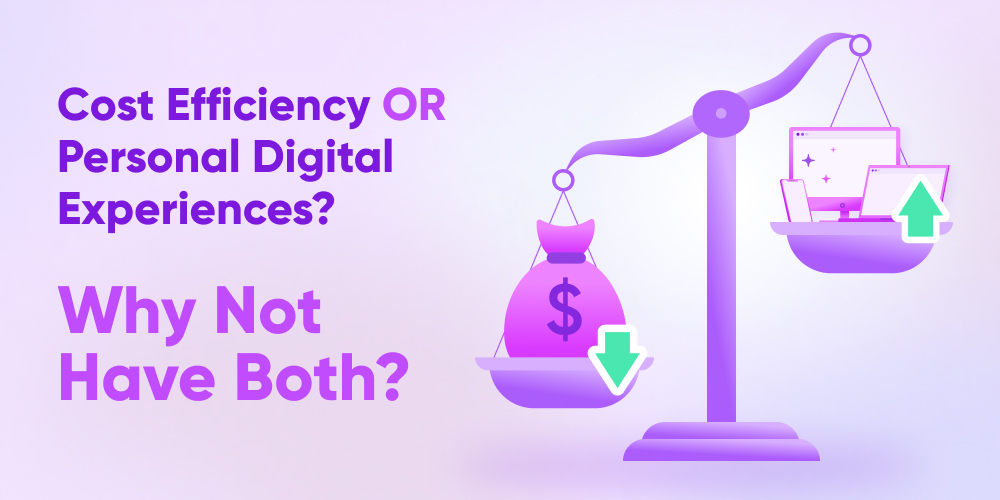Humanizing the digital customer experience has been one of the biggest trends in financial services over the past few years. Meeting customers on-screen and guiding them through their own personal journey aligns with today’s digital lifestyle and if done well, can increase customer engagement.
The current economic uncertainty, however, is causing many financial institutions to reprioritize improving efficiencies and cutting costs over personalizing the digital experience. They are looking for more automation and leaning more into self-service options, such as chatbots.
Service leaders have always had to balance the need to reduce costs against the desire to create a quality experience for customers. But not anymore. Now, financial institutions don’t have to choose one at the expense of the other. Digital Customer Service (DCS) enables a highly personalized ‘human touch’ while also delivering cost-effective automation and self-service features.
A common misconception about digital service is that it’s impersonal. The word “digital” itself tends to imply “non-human.” But the ability to meet customers online with a live representative who can guide them through a seamless digital experience has largely changed this perception, leading to an industry shift favoring digital-first solutions. While live chat, OnScreen voice, and especially video have overcome initial apprehensions, doubt persists around self-service features and chatbots in particular. How can Artificial Intelligence match the warm, live connection of a real human service professional?
Self-Service Support
But the real value of conversational AI—virtual assistants and chatbots—is in streamlining digital experiences, not in mimicking the human connection. It’s all about aligning to customer expectations and according to recent findings from Statista, more than 88% now expect online self-service support. Customers are not looking for small talk banter from a chatbot, in the same way that no one expects a smile from the ATM. They value self-service for its efficiency to provide information and help customers complete their banking needs, on their own time.
The challenge arises when a customer is unable to resolve an issue within the chatbot or self-service feature. This is when live human support can help with a nuanced understanding of a particular issue to provide the appropriate assistance. Unfortunately, that typically means the customer has to make a phone call and start all over. Rather than accelerating the engagement, the virtual assistant has added an unnecessary, time-wasting step.
Bridging the Transitions Seamlessly
Digital Customer Service can overcome this disconnect by bridging virtual assistants to live human support online, for a seamless digital experience. When a chatbot is unable to provide further assistance, the engagement can easily transition to a live service representative on-screen without leaving the digital domain. Better yet, the service rep has rich context from the chatbot to understand the customer’s need. The rep can jump right in and take over where the virtual assistant left off, without skipping a beat—or breaking the connection.
In fact, Digital Customer Service goes beyond delivering both a humanized digital experience and cost-saving efficiencies. Combined together, they improve overall satisfaction, meeting customer expectations for quick self-service options and also personalized human guidance at their particular moment of need.
What used to be a no-win situation in the past is now a no-brainer. A richer digital experience and efficient, cost-saving automation go hand in hand. Look for a Digital Customer Service platform that meets customers on-screen and keeps them online with both automated self-service and live human support, offered exactly when each customer needs it.
For more Credit Union DCS insights, check out the Glia Resource Center.






